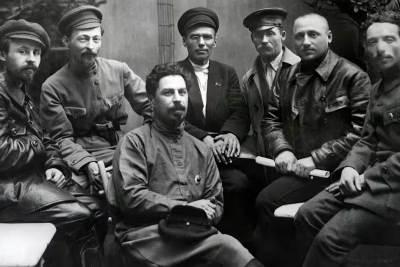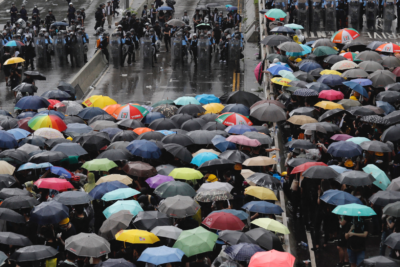
Authoritarianism in Belarus: How Lukashenko’s Regime Controls Power in 2024

🧭 A Dictatorship Evolving in Real Time
- 🧭 A Dictatorship Evolving in Real Time
- 📰 1. Media Monopoly: Information Is Power
- 👁️ 2. Surveillance State: The Eye Never Blinks
- 🧑⚖️ 3. Rule by Fear: Courts as Weapons
- 🗳️ 4. Electoral Theater: The Illusion of Democracy
- 🎭 5. The Cult of Stability
- 🌍 6. International Isolation and Strategic Dependence
- ✊ 7. Silencing the Streets: Crushing Civil Society
- 📱 8. Repression Without Borders
- 🧠 Conclusion: Controlled but Not Defeated
- 🧭 Introduction: A Dictatorship Evolving in Real Time
- 📰 1. Media Monopoly: Information Is Power
- 👁️ 2. Surveillance State: The Eye Never Blinks
- 🧑⚖️ 3. Rule by Fear: Courts as Weapons
- 🗳️ 4. Electoral Theater: The Illusion of Democracy
- 🎭 5. The Cult of Stability
- 🌍 6. International Isolation and Strategic Dependence
- ✊ 7. Silencing the Streets: Crushing Civil Society
- 📱 8. Repression Without Borders
- 🧠 Controlled but Not Defeated
In 2025, authoritarianism in Belarus has not only endured — it has evolved. Under the nearly three-decade-long rule of Alexander Lukashenko, Belarus has become a case study in modern dictatorship, where old-school repression meets digital control.
From rigged elections and media censorship to sophisticated surveillance systems and transnational intimidation, Lukashenko’s regime offers a chilling portrait of how authoritarian power is maintained in a European nation in the 21st century.
The rise of authoritarianism in Belarus explains why it is often called Europe’s last dictatorship by media and human rights groups.
This article explores the key mechanisms through which the regime sustains its grip — and the social, political, and cultural costs of that control.
📰 1. Media Monopoly: Information Is Power
The Belarusian state maintains a complete monopoly on national media. All major television networks, radio stations, and newspapers are state-owned or tightly regulated.
Independent media outlets such as TUT.by, Belsat, and Nasha Niva have been shut down or declared extremist. Journalists who challenge the regime face:
- Arbitrary detention
- Confiscation of equipment
- “Fake news” prosecution
Even digital platforms like Telegram channels are targeted. In 2025, online speech is no longer safe — and self-censorship is widespread.
“You don’t need prison cells when people censor themselves.”
👁️ 2. Surveillance State: The Eye Never Blinks
Authoritarianism in Belarus relies heavily on constant surveillance of the population. The regime uses:
- Facial recognition during protests
- Digital tracking of phones and social media activity
- Monitoring of encrypted messages through spyware
The KGB, still operating under its Soviet name, leads these operations. Citizens know that their every move — online or offline — may be watched.
🧑⚖️ 3. Rule by Fear: Courts as Weapons
The judicial system in Belarus is fully subservient to the executive. Courts do not function independently; instead, they:
- Rubber-stamp verdicts against opposition members
- Use “extremism” charges to jail protesters
- Block appeals and due process
Since 2020, over 1,500 political prisoners remain behind bars. In 2025, even lawyers are being prosecuted for defending dissidents.
🗳️ 4. Electoral Theater: The Illusion of Democracy
Belarus holds elections — but none are free or fair. In 2025, Lukashenko’s administration has introduced:
- “Digital voting” with no transparency
- Voter suppression in opposition strongholds
- Disqualification of all credible challengers
In the most recent local elections, the opposition won 0 seats, despite widespread popular support. The message is clear: elections in Belarus are a performance, not a choice.
🎭 5. The Cult of Stability
One of the regime’s most powerful tools is its narrative control. Lukashenko presents himself as the guarantor of peace and order in a chaotic world.
State media often depicts:
- The West as decadent and aggressive
- Russia as a strategic ally
- The Belarusian people as grateful for “stability”
In this narrative, dissent equals betrayal. Questioning the regime becomes unpatriotic — or criminal.
🌍 6. International Isolation and Strategic Dependence
Authoritarianism in Belarus thrives in part because of the regime’s dependence on Russia, which provides:
- Military support
- Economic lifelines
- Political cover in international forums
At the same time, the EU, UK, and U.S. have imposed sanctions on regime officials, banned state airlines, and supported Belarusian civil society in exile.
Yet Lukashenko weaponises this isolation, blaming external enemies for domestic hardship — and reinforcing his strongman image.
✊ 7. Silencing the Streets: Crushing Civil Society
Since 2020, Belarus has seen:
- Over 400 NGOs shut down
- Trade unions banned
- Student organisations dissolved
- Churches harassed for hosting vigils
Even charity work is now regulated. No group is allowed to exist unless it reinforces the state’s ideological framework.
“Authoritarianism doesn’t fear violence. It fears organisation.”
Belarus ranks among the lowest in global democracy ratings, according to Freedom House.
📱 8. Repression Without Borders
In 2025, the regime has extended its repression beyond borders. Tactics include:
- Tracking exiled journalists and activists
- Pressuring neighbouring states to extradite critics
- Threatening families inside Belarus
This has created a transnational climate of fear, even among those living in safety abroad.
🔗 Related: Belarusian Partisans in Exile: Resistance from Afar
🧠 Conclusion: Controlled but Not Defeated
The machinery of authoritarianism in Belarus is efficient, relentless, and constantly adapting. But so is the resistance.
From cyber activists and cultural dissenters to exiled journalists and anonymous organisers, the people of Belarus have not given up.
Lukashenko’s grip may be tight — but it is not eternal. History has shown that regimes rooted in fear are ultimately fragile.
🧭 Introduction: A Dictatorship Evolving in Real Time
In 2025, authoritarianism in Belarus has not only endured — it has evolved. Under the nearly three-decade-long rule of Alexander Lukashenko, Belarus has become a case study in modern dictatorship, where old-school repression meets digital control.
From rigged elections and media censorship to sophisticated surveillance systems and transnational intimidation, Lukashenko’s regime offers a chilling portrait of how authoritarian power is maintained in a European nation in the 21st century.
This article explores the key mechanisms through which the regime sustains its grip — and the social, political, and cultural costs of that control.
📰 1. Media Monopoly: Information Is Power
The Belarusian state maintains a complete monopoly on national media. All major television networks, radio stations, and newspapers are state-owned or tightly regulated.
Independent media outlets such as TUT.by, Belsat, and Nasha Niva have been shut down or declared extremist. Journalists who challenge the regime face:
- Arbitrary detention
- Confiscation of equipment
- “Fake news” prosecution
Even digital platforms like Telegram channels are targeted. In 2025, online speech is no longer safe — and self-censorship is widespread.
“You don’t need prison cells when people censor themselves.”
👁️ 2. Surveillance State: The Eye Never Blinks
Authoritarianism in Belarus relies heavily on constant surveillance of the population. The regime uses:
- Facial recognition during protests
- Digital tracking of phones and social media activity
- Monitoring of encrypted messages through spyware
The KGB, still operating under its Soviet name, leads these operations. Citizens know that their every move — online or offline — may be watched.
🔗 Related: Understanding the Role of the Belarus KGB in State Repression
🧑⚖️ 3. Rule by Fear: Courts as Weapons
The judicial system in Belarus is fully subservient to the executive. Courts do not function independently; instead, they:
- Rubber-stamp verdicts against opposition members
- Use “extremism” charges to jail protesters
- Block appeals and due process
Since 2020, over 1,500 political prisoners remain behind bars. In 2025, even lawyers are being prosecuted for defending dissidents.
🔗 Related: Timeline of Political Repression in Belarus (2020–2025)
🗳️ 4. Electoral Theater: The Illusion of Democracy
Belarus holds elections — but none are free or fair. In 2025, Lukashenko’s administration has introduced:
- “Digital voting” with no transparency
- Voter suppression in opposition strongholds
- Disqualification of all credible challengers
In the most recent local elections, the opposition won 0 seats, despite widespread popular support. The message is clear: elections in Belarus are a performance, not a choice.
🎭 5. The Cult of Stability
One of the regime’s most powerful tools is its narrative control. Lukashenko presents himself as the guarantor of peace and order in a chaotic world.
State media often depicts:
- The West as decadent and aggressive
- Russia as a strategic ally
- The Belarusian people as grateful for “stability”
In this narrative, dissent equals betrayal. Questioning the regime becomes unpatriotic — or criminal.
🌍 6. International Isolation and Strategic Dependence
Authoritarianism in Belarus thrives in part because of the regime’s dependence on Russia, which provides:
- Military support
- Economic lifelines
- Political cover in international forums
At the same time, the EU, UK, and U.S. have imposed sanctions on regime officials, banned state airlines, and supported Belarusian civil society in exile.
Yet Lukashenko weaponises this isolation, blaming external enemies for domestic hardship — and reinforcing his strongman image.
✊ 7. Silencing the Streets: Crushing Civil Society
Since 2020, Belarus has seen:
- Over 400 NGOs shut down
- Trade unions banned
- Student organisations dissolved
- Churches harassed for hosting vigils
Even charity work is now regulated. No group is allowed to exist unless it reinforces the state’s ideological framework.
“Authoritarianism doesn’t fear violence. It fears organisation.”
📱 8. Repression Without Borders
In 2025, the regime has extended its repression beyond borders. Tactics include:
- Tracking exiled journalists and activists
- Pressuring neighbouring states to extradite critics
- Threatening families inside Belarus
This has created a transnational climate of fear, even among those living in safety abroad.
🔗 Related: Belarusian Partisans in Exile: Resistance from Afar
🧠 Controlled but Not Defeated
The machinery of authoritarianism in Belarus is efficient, relentless, and constantly adapting. But so is the resistance.
From cyber activists and cultural dissenters to exiled journalists and anonymous organisers, the people of Belarus have not given up.
Lukashenko’s grip may be tight — but it is not eternal. History has shown that regimes rooted in fear are ultimately fragile.





